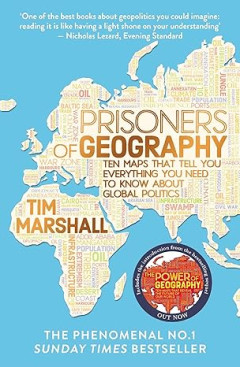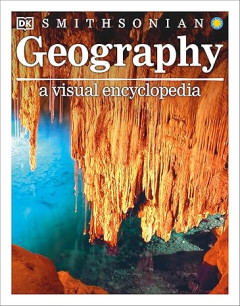Ditapis dengan
E-book Dryland Social-Ecological Systems in Changing Environments
Drylands encompass land areas characterized by a mean annual precipitation to mean annual potential evapotranspiration ratio (known as the aridity index) below 0.65. The aridity index defines four distinct dryland subtypes: hyper-arid (aridity index < 0.05), arid (0.05 ?aridity index < 0.20), semi-arid (0.20 ?aridity index < 0.50) and dry sub-humid …
- Edisi
- -
- ISBN/ISSN
- 9789819993758
- Deskripsi Fisik
- 423 hlm
- Judul Seri
- -
- No. Panggil
- 910.02 SMI d
E-book Rock Fracture Mechanics and Fracture Criteria
For rock engineering projects, the cutting and fragmenting of rocks has attracted much attention. Exploring the fracture characteristics of rocks is helpful in achieving efficient and sustainable excavation for mining and tunneling engineering. The frac-ture toughness of rocks is a crucial mechanical indicator that weighs the initiation and extension…
- Edisi
- -
- ISBN/ISSN
- 9789819758227
- Deskripsi Fisik
- 119 hlm
- Judul Seri
- -
- No. Panggil
- 550 ZHA r

E-book Prisoners Of Geography: Ten Maps That Explain Everything About the World
- Edisi
- -
- ISBN/ISSN
- 9781501121463
- Deskripsi Fisik
- 161 halaman, ilus.
- Judul Seri
- -
- No. Panggil
- 910.02 MAR p
- Edisi
- -
- ISBN/ISSN
- 9781501121463
- Deskripsi Fisik
- 161 halaman, ilus.
- Judul Seri
- -
- No. Panggil
- 910.02 MAR p

E-book Geography: A Visual Encyclopedia
Pack up your bags for a round the world trip! You’ll take in natural wonders far and wide as this spectacular visual encyclopedia leads the exciting exploration of Earth and beyond.?? From the tallest snowy peak of Mount Everest to the deep, dark waters of the Mariana Trench, you’ll see it all in stunning color images that bring the world to life. Feel the heat in the African desert,…
- Edisi
- -
- ISBN/ISSN
- 9781465412188
- Deskripsi Fisik
- 306 halaman, ilus.
- Judul Seri
- -
- No. Panggil
- 910.2 WOO g
E-book Rivers of the Anthropocene
“There was no such thing as the Scientific Revolution, and this is a book about it” (Shapin 1996, 1). So began Stephen Shapin’s The Scientific Revolution, a work, con-cise and smart, that embodied an approach to the history of science termed “the social construction of science.” Shapin argued that if we are going to talk about a “scientific revolution,” then we need to see it not …
- Edisi
- -
- ISBN/ISSN
- 9780520967939
- Deskripsi Fisik
- 244 hlm
- Judul Seri
- -
- No. Panggil
- 550 BEN r
E-book Earth As Art
In 1960, the United States put its first Earth-observing environmental satellite into orbit around the planet. Over the decades, these satellites have provided invaluable information, and the vantage point of space has provided new perspectives on Earth. This book celebrates Earth’s aesthetic beauty in the patterns, shapes, colors, and textures of the land, oceans, ice, and atmosphere. The bo…
- Edisi
- -
- ISBN/ISSN
- 9780160913655
- Deskripsi Fisik
- 172 halaman
- Judul Seri
- -
- No. Panggil
- 550.22 NAS e
E-book Earth At Night: Our Planet in Brilliant Darkness
Dazzling photographs and images from space of our planet’s nightlights have captivated public attention for decades. In such images, patterns are immediately seen based on the presence or absence of light: a distinct coastline, bodies of water recognizable by their dark silhouettes, and the faint tendrils of roads and highways emanating from the brilliant blobs of light that are our modern, w…
- Edisi
- -
- ISBN/ISSN
- B0B64WNXZK
- Deskripsi Fisik
- 200 halaman, ilus.
- Judul Seri
- -
- No. Panggil
- 525 NAS e
E-book A History of Near-Earth Objects Research
In 2016, NASA took on a new responsibility: defending our planet from devastating impacts by asteroids and comets that approach the Earth, or near-Earth objects. That event, which followed the prominent Chelyabinsk meteor explosion in 2013, reflected a growing interest in, and concern about, the threat of celestial impacts. In ancient times, the solar system’s small bodies—asteroids and com…
- Edisi
- -
- ISBN/ISSN
- 9781626830691
- Deskripsi Fisik
- 407 halaman, ilus.
- Judul Seri
- -
- No. Panggil
- 523.4 CON a
E-book Earth’s Climate Response to A Changing Sun
For centuries, scientists have been fascinated by the role of the Sun in the Earth’s climate system. Recent discoveries, outlined in this book, have gradually unveiled a complex picture, in which our variable Sun affects the climate variability via a number of subtle pathways, the implications of which are only now becoming clear. This handbook provides the scientifically curious, from underg…
- Edisi
- -
- ISBN/ISSN
- 9782759817337
- Deskripsi Fisik
- 361 halaman
- Judul Seri
- -
- No. Panggil
- 550 DUD e
E-book Optics Review
Depth of focus describes the image location range where the image is clear when focused by an optical system. Outside this range, the image will be significantly blurry. However, within this few millimeter range, the image appears quite sharp. When working with a multiple lens system, it is essential to first calculate the position of the image formed by the first lens. Only after locating the …
- Edisi
- -
- ISBN/ISSN
- -
- Deskripsi Fisik
- 135 hlm
- Judul Seri
- -
- No. Panggil
- 525.2 WIL o
 Karya Umum
Karya Umum  Filsafat
Filsafat  Agama
Agama  Ilmu-ilmu Sosial
Ilmu-ilmu Sosial  Bahasa
Bahasa  Ilmu-ilmu Murni
Ilmu-ilmu Murni  Ilmu-ilmu Terapan
Ilmu-ilmu Terapan  Kesenian, Hiburan, dan Olahraga
Kesenian, Hiburan, dan Olahraga  Kesusastraan
Kesusastraan  Geografi dan Sejarah
Geografi dan Sejarah